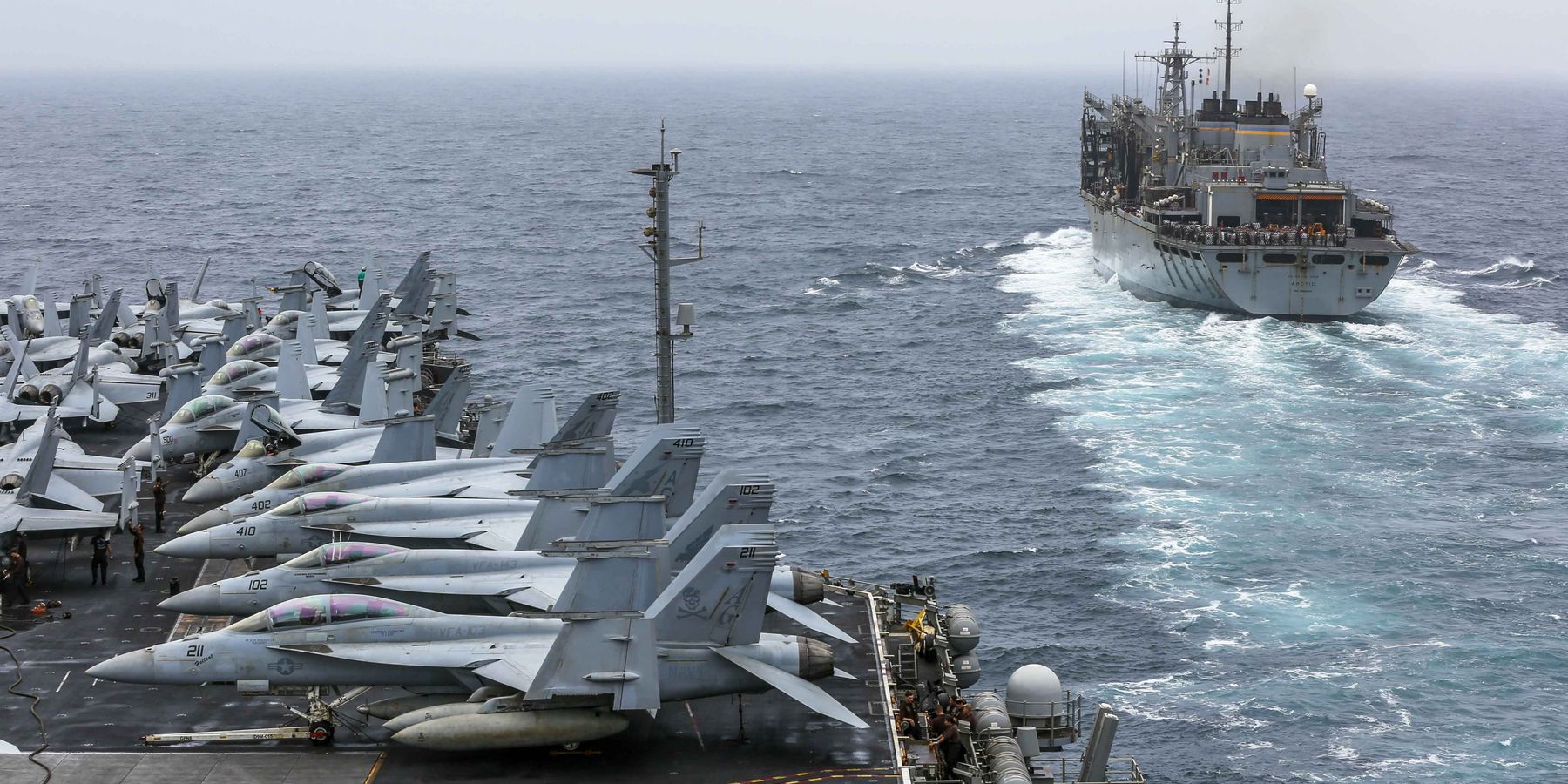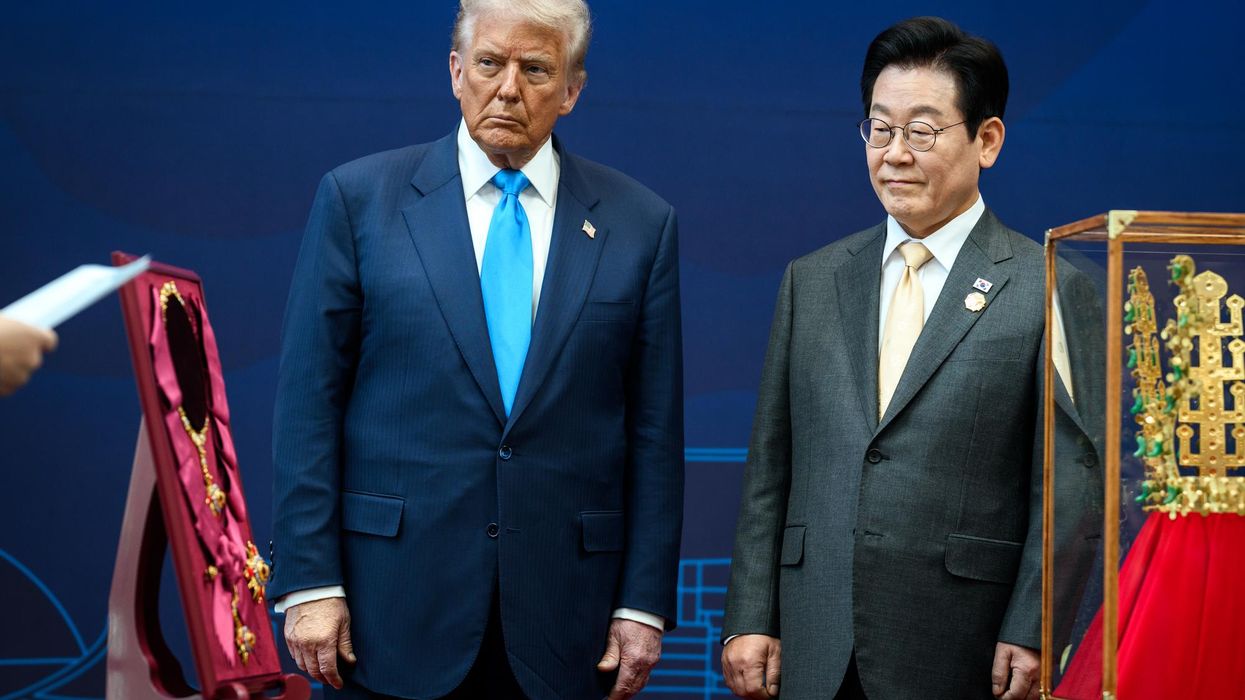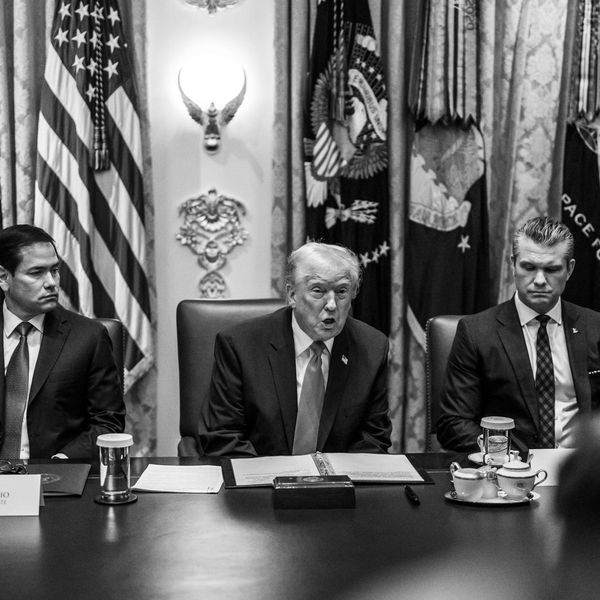A U.S. Navy oil tanker running aground off the coast of Oman isn’t a huge event. The fact that it is the only tanker to refuel American warships in a Middle East conflict zone, is.
In fact, this only underscores the fragility of the Navy’s logistic systems at a time when the U.S. has chosen to lean in on an aggressive military posture when it may not have the full capacity to do so, and it may or may not be in the national interest for the Navy to be conducting these operations in the first place.
The first is a question for Naval experts, many of whom may not feel comfortable second guessing the mission. So let’s tackle that one first.
The issue: according to a statement by the U.S. Navy, “USNS Big Horn sustained damage while operating at sea in the U.S. 5th Fleet area of operations overnight on Sept. 23. All crew members are currently safe and U.S. 5th Fleet is assessing the situation.”
The Big Horn is a 33-year-old Kaiser class refueler. This ship is owned by the Navy and is operated by civilian mariners under the U.S. Sealift Command. These ships are responsible for getting jet fuel out to the carrier’s fighter planes and replenishments to the other escort ships at sea — in this case, the Lincoln Carrier Strike Group, which has been serving in the Arabian Sea area since August. It includes the flagship carrier USS Abraham Lincoln, the air wing (including 5th generation F-35s) and three destroyers.
It is the only replenisher nearby, making refueling tricky for the strike group, which is busy in the throes of a fight with the Houthis. The Lincoln had been accompanied by the Theodore Roosevelt strike group which had departed the area in mid-September, according to reports.
Sal Mercogliano, in his “What's Going on With Shipping?” podcast last week laid out where the other refuelers currently assisting other Navy assets are in the world right now: the Mediterranean, Singapore, the Western Pacific, two on the West Coast of the U.S., one on the Southern coast at Norfolk, and a number that are being fixed or ready for decommissioning at various shipyards across the globe. There aren’t many to spare.
“What this means is that the ability of the U.S. Navy to deploy and sustain its battle groups is very precarious,” Mercogliano points out. “So to support U.S. battle groups, whether it's an amphibious group or a strike group, requires vessels that can go from forward bases, fuel up, and bring the fuel, ammunition, dry cargo out to them.”
“You don't have a lot of back backup in this and that's a big problem,” he added, “because if you don't have backup, when you lose a ship like Big Horn, you've got to scramble to fix it.”
The Big Horn was tugged to a nearby port but it is not clear when and if it will be ready to get back to work. According to reports, including this one by John Konrad at gCaptain, the Navy may have to turn to a commercial tanker for refueling the strike group but that will pose its own difficulties. It would require retrofitting for special rigs, hoses, fuel pumps, communications and most importantly a special team to be flown out to the Middle East to oversee it all.
“Commercial tankers are significantly slower than Navy oilers, which could leave the USS Abraham Lincoln more vulnerable to attack during aviation fuel loading operations,” Konrad wrote.
Experts say the real problem is the shortage of fuelers and other support ships throughout the entire Navy. Not only that but there is a shortage of qualified crew.
According to Sam Lagrone at USNI news in August, the Navy is weighing whether to dock 17 support ships in a “great reset” plan because of the shortage. They need to free up the crew. “For every billet on an MSC ship there are about 1.27 mariners to fill the positions, a ratio that two former MSC master mariners told USNI News on Thursday was unsustainable,” wrote Lagrone.
At that ratio, a mariner would be at sea for four months and off for about a month and then return. “No one is able to have a healthy work-life balance and be able to get off the ship and get adequate time to go home, have time at home with their family, take leave, take care of medical requirements [in that timeframe],” a former mariner told USNI.
Meanwhile, the Kaiser class oilers are supposed to be replaced by the new John Lewis class ships, which feature “double-hull construction, improved safety, and enhanced fuel capacity.” Three have been built and christened so far and more on the way, but as Mercogliano points out, they already “have some substantial issues that need to be corrected, and so we don't have them yet” out at sea.
Some might comment that this is a microcosm of the U.S. military’s problems writ large. Right now there are current recruitment problems, consistent training and preparedness concerns, and the Pentagon is paying billions for big ticket ships and planes that are far behind schedule and do not meet standards.
Lyle Goldstein, who studies both Russian and Chinese militaries, said there are widespread issues confronting the U.S. Navy right now and the grounding of Big Horn “certainly illustrates this.”
He said there are similar issues with stretched oilers operating under the U.S. Pacific Fleet, which includes the 3rd and 7th Fleets, for a total of 200 ships, 1,500 aircraft, and 150,000 military and civilian personnel. “I have documents illustrating that Chinese strategists repeatedly identify weaknesses in the U.S. Navy logistics system stretching across the Asia-Pacific, particularly with respect to oilers,” he told RS.
Like other strategists he believes that the current capacity no longer matches the ambitions of the U.S. to be everywhere, all the time, and to engage in aggressive posturing in places like the Pacific while literally fighting a military upstart (Houthis) in the Middle East. American ships, along with the UK Royal Navy, have been intercepting and engaging Houthi attacks for almost a year. Critics say the kinetic mission is expensive and futile, and ultimately not in U.S. strategic interests.
On the Middle East, Goldstein said, “to me it is quite a dicey situation and may imply the need for a rethink of strategy across the board, including Naval strategy where clearly the force is over-taxed and there needs to be a readjustment and retrenchment. People should realize that we don’t need the largest Navy on Earth, but we need a competent Navy. And we will only have a more competent Navy if we rein in our objectives, train our crews closer to home, prioritize our people, and re-focus on warfighting competencies versus parading around to demonstrate 'presence."
- The US military chases shiny new things and the ranks suffer ›
- Recent string of deadly military crashes is no accident ›
















